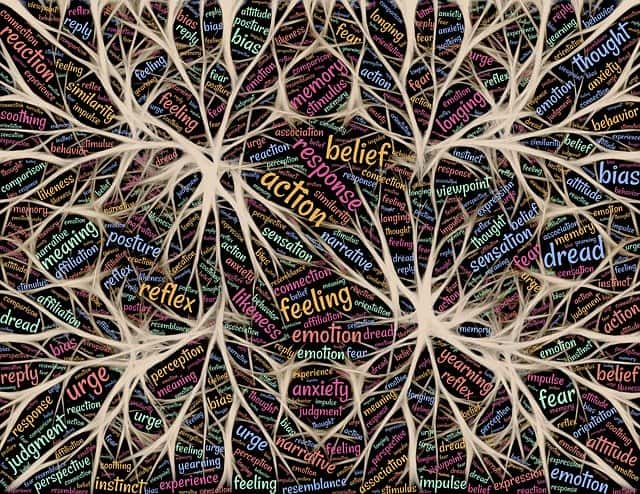We have already covered extensively on this blog how powerful and effective EMDR can be, but some people new to the subject may want a quick overview of just what kind of experiences EMDR can actually be effective working with? What exactly can EMDR work with in this regard?
EMDR can work with any experience which has been traumatic or distressing in a person’s life, and has not been fully processed by the mind/brain. This can range from more obviously traumatic isolated incidents, like accidents, crashes, assaults and war experiences, to distressing childhood experiences and unpleasant life events in general.
Here is a quick list taken from our homepage which gives some examples of the kind of experiences EMDR can be effective in working with:
- Extreme trauma such as combat/war experience, near death experiences, sexual abuse, witnessing murder or attempted murder or rape, extreme road traffic accidents. Warning: ALWAYS seek the help of a therapist when dealing with such extreme “Big T” Traumas. This blog is meant for educational purposes and to disperse information about the topic to more people. Always seek the guidance of a qualified therapist when dealing with any sizeable trauma and most especially extreme “Big T” Traumas.
- Violent abuse – assaults, fights etc.
- Depression
- Anxiety
- Phobias
- Addiction
- Messy breakups/divorces/separations.
- Infidelity.
- Work isses – stress, bullying, harrassment, mistreatment.
- Psychopathic/sociopathic/narcissistic abuse – see our page on psychopathy
- Bereavement and loss.
- Humiliation.
- Belittlement.
- Unpleasant childhood experiences – parental abuse, bullying, exclusion, ridicule and so on.
In broad terms, we can generally group these experiences in two main categories – the so called “Big T” traumas of obviously traumatic events like accidents and war, and the so called “Small T” traumas or distressing life events in general like relationship problems, conflict and other traumatic things most of us go through in the normal course of life.
Let’s look at each of these types of experience in turn, and go through how EMDR can be useful in treating each of them.
Contents
EMDR For Treating “Big T” Traumas – Major Traumatic Events
This first type of experience – the “Big T” trauma – is the type of experience EMDR is most renowned for treating. This can include any one off or repeated experience that is obviously traumatic and distressing, and can be clearly demarcated and identified (ie. This event happened to me on this date in this year).
This could include many things; here are the more common examples:
- War and Combat experiences
- Road and traffic accidents
- Sexual assaults or attempted sexual assaults
- Attempted murder or witnessing the murder of another
- Physical assaults
- Freak distressing accidents
- Natural disasters (earthquakes, tsunamis, etc).
These experiences can often leave many of the people who experience them with long lasting trauma and sometimes symptoms of PTSD (flashbacks, depression, loss of sleep/appetite, numbness, and so on). Their mind struggles to fully process or move on from the event, with their mind and body in some way remaining stuck at the time it happened.
EMDR can be a superbly effective treatment to help resolve this type of trauma, by gradually tapping back into a distressing memory, and using eye movements to simulate the mind/brain to process the traumatic memory to resolution in a way it couldn’t at the original time it happened.
See our article on the 8 step process of EMDR for more on exactly how this process work, as well as a good summary given in the video just below.
Whilst these experiences can be seen as the most distressing of all traumas – hence the name “Big T” trauma – they can in some ways be the easier to work, simply because they are very clear and easy to identify.
The client and therapist know where they are in some sense – this event happened on this day and time in history, and it still causes the person problems in the form of flashbacks or other PTSD style symptoms.
There is less need to “root around” trying to find the experience – the person already knows what is bothering them, and it is a case of simply tuning into it more closely and using the eye movements to work with the trauma.
This is in contrast to more subtle and invasive forms of trauma, perhaps due to more persistent and relentlesss emotional abuse and bullying the childhood and teenage years, or more deeply repressed traumatic childhood memories, which can be more difficult to retrieve and work with.
This experiences can come under the other umbrella of the so called “Small T” traumas, which we will now deal with in the next section.
EMDR For Treating “Small T” Traumas – Unpleasant Life Experiences
The so called “Big T” traumas can be contrasted with “Small T” traumas, which may not be in the same category as the “Big T” traumas in terms of intensity, but can still be distressing and traumatic for people to experience, and can leave long lasting effects if not properly processed and resolved by the person.
More colloquially, these could be called “unpleasant life events/experiences” – things which may not be seen to be as serious or traumatizing as the Big T events, but can still be traumatizing to people, especially if several of them happen to the person in a short space of time.
This could include things such as:
- Distressing divorces/separations, where fighting and infidelity is involved
- Heated arguments or conflicts.
- Prolonged workplace or school bullying
- Childhood abuse, either one off incidents or more prolonged
- Humiliation
- Rejection
- Belittlement
- Bereavement and loss
- Any other life experience which was distressing or traumatic in some way for the person, and which still continues to affect them in some way in the present; which they have struggled to fully let go of.
One again we can separate out these types of experiences into more one off, clearly identifiable experiences, with a clear time and date, or whether they are more prolonged and numerous traumas, for example childhood abuse or bullying happening repeatedly over a long period of time, with many many distressing individual experiences.
In the case of the former, they are sometimes more easy to work with, as they are easier to identify and hone in on. In the case of the latter, these wounds or traumas often interlock in the more of a Complex-PTSD style pattern that can take longer to fully resolve.
Nevertheless, regardless of the pattern, it is true that any kind of distressing life experience can continue to adversely affect someone if not fully processed to resolution by the mind/brain, and EMDR can be effective in working with these experiences regardless of the content and context.
How Past Experiences Can Affect Us in the Present
Distressing past experiences, whether in the “Big T” or “Small T” category, can remain “stuck” in the mind or body if the mind was too overwhelmed at the time the event happened to process it.
The mind can often “bury” or repress such experiences if they are too distressing to hold in full awareness all the time. This can lead to symptoms feeding through into the present mindset and life of the person, even if the initial event happened many years ago.
Such symptoms can include things like:
- Numbness
- Depression
- Sleep disturbance
- Anxiety – a huge knock on symptom from unresolved trauma
- OCD behavior patterns
- “Flashbacks” of the events
- Panic attacks
- Anger or rage flashbacks.
- Stereotyped or immature reactions
Of course the repression of distressing memories runs on a continuum, from not repressed at all, to partially repressed (comes back into awareness sporadically), to fully repressed (totally out of a person’s current awareness).
However, the latter kind of fully repressed experience – where a person may be having symptoms in the present but has no idea why since the initial traumatic memory they are stemming from has been repressed – can be the most distressing, since they sufferer doesn’t know why they are feeling or behaving this way in the present. The source experience/memory has been pushed out of their awareness.
This can lead to a person feeling or acting in certain dysfunctional or caricatured ways, with the feelings, thoughts and behaviors from a pre-existing unresolved trauma somehow connected or linked to what is happening in the present. The person is effectively still reacting to something which happened in the past rather than what is actually happening in the present.
See the video from EMDR founded Francine Shapiro for more on this:
How EMDR Can Work to Resolve Distressing Experiences
Regardless of the type and context of the distressing or traumatic experiences a person has had, EMDR can work in the same way to resolve and process them to resolution so they no longer bother the person.
EMDR has been shown to be a very powerful and effective psychotherapy in resolving traumatic experiences, both of the “Big T” and “Small T” category.
Here is the general process by which it works:
- A client is slowly tapped back into a traumatic experience – re-engaging with the sights, sounds, feelings, thoughts that are associated with it.
- The therapist uses eye movements and/or other stimuli to keep the person focused on externally, whilst they focus internally on traumatic experience.
- This dual focus of attention seems to distract the mind and cause it to “blur” or lessen the intensity of the trauma. It has something else to focus on and not just the trauma alone.
- When successful, this treatment allows a person to far more easily distance themselves from and let go of traumatic life experiences. They no longer burden them so much.
- Dealing with specific events and experiences can also bring up other secondary repressed experiences which can then also be dealt with.
- This, along with the ripple effect where dealing with one experience can also generalize to all other similar experiences, makes EMDR a very powerful, effective and fast acting form of psychotherapy.
- When done properly, it can deliver significant improvements in a person’s self image, emotional regulation and quality of life in a very short space of time compared to other forms of psychotherapy.
- In this sense, EMDR can be an excellent therapeutic choice for those struggling to move on from or get over any kind of seriously distressing life experiences.
- See our article on the full 8 step EMDR process for more on how it works.
- See our Videos page for some good testimonials on the kind of experiences and conditions EMDR can treat.
- EMDR can also treat a number of other mental health conditions, again often by resolving any underlying trauma which drives them. See our articles on EMDR for anxiety, addiction, phobias and depression.






